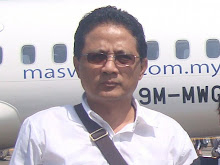BETWEEN RISING POWERS
1. China and India as responsible “ stakeholders “ of the int’l system.
2. Singapore, with its pragmatic foreign policy is one of the active players in the region trying to engage both powers.
3. Singapore has played a major role in promoting preferential trading arrangement (FTA) between ASEAN and both China and India.
4. India’s attempt to be a major player in SEA.
5. SEA could be a theatre of competition between China and India as these two emerging powers expand their spheres of influence.
6. SEA could also be a theatre for India to evolve new partnership with China, thereby moving from the post 1962 policy of containment to co-engagement with China.
7. Singapore’s effort to facilitate China and India’s engagement with SEA, two ancient entities rising simultaneously today.
8. SEA is a part of the theatre that offers India a potential role as a counterweight to China.
9. Singapore emphasized its support for the one-China policy and its opposition to Taiwanese independence.
10. Singapore’s support for an American proposal to send its troops to help patrol the Malacca Straits, shocked the Chinese.
11. Japan, Taiwan and South Korea were forming a de facto arc of containment against China.
12. Beijing’s desire to reduce America’s influence in Asia and advance its own vision of Asian regionalism by excluding US, which Beijing may once again consider its own backyard.
13. With such a large fleet, Zheng He could have embarked on conquest, but he did not do so, instead helping small states to defeat invasion and crush rebellion.
14. Chinese had not conquered or governed any of states outside imperial borders. There was really no Chinese empire outside Chinese lands. It is not China’s past that is worrying.
15. What would ne new and alarming to the region would be a modernized China finding that it has to behave like the modern great powers of the west.
16. Asia’s future will not resemble its past. Instead of sliding into anarchy or organizing itself into pre-Westphalian hierarchy.
17. Asia is increasingly able to manage its own insecurity through shared regional norms, rising economic interdependence and growing institutional linkages.
18. Chinese tendency for peaceful management of its relation with neigbours, because Chinese policy was driven by realpolitik.
19. Ther would be greater competition and rivalry that would produce the instability.
20. No Asian power is trying to balance China. India is balancing China and ASEAN recognizes India’s role as a potential counterweight to any threat from China down the road.
21. Mandate of Heaven made the Emperor the interface between Heaven and Earth. Son of heaven.
22. ASEAN Way has been at the core of efforts to build SEA regional identity in the modern era.
23. Rising India will follow the pattern of rising great power by attempting hegemony in its region.
24. India’s successful intervention in the East Pakistan civil war lead to the dismemberment of Pakistan and the emergence of Bangladesh in 1971.
25. Indira Doctrine : asserted that South Asian states facing domestic political problem should first seek help within the subcontinent. The presence of an extra-regional power in the subcontinent and/or Indian Ocean region would be considered adverse to India’s security interests unless that powers recognized India’s predominance.
26. Gujral Doctrine 1977 : - Good faith and trust among neighbours; - No South Asia country should allow its territory to be used against the interests of another country of the region; - None should interfere in the internal affairs of another; - Respect each other’s territorial integrity and sovereignty; - Settle all their disputes through peaceful bilateral negotiations.
27. US has decided to help India become a major world power in the 21st century. Initiatives such as the Next Steps in Strategic Partnership, the US-India Global Democratic Initiative and New Framework for the US-India Defence Relationship.
Tuesday, January 12, 2010
Subscribe to:
Post Comments (Atom)

No comments:
Post a Comment